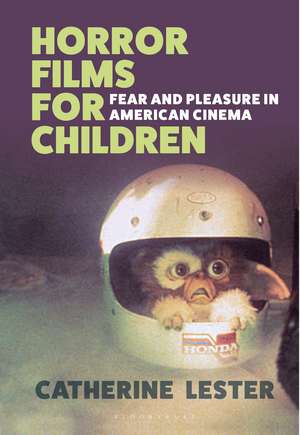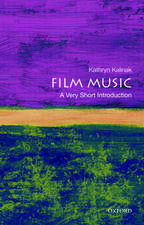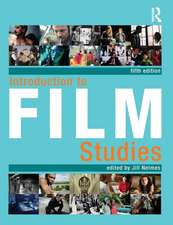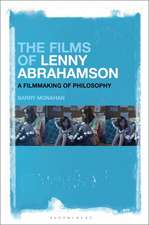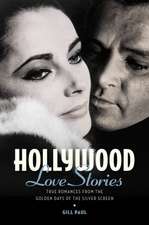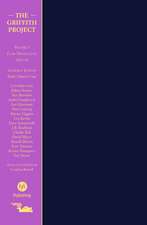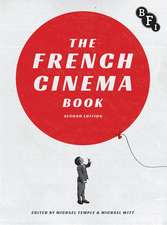Horror Films for Children: Fear and Pleasure in American Cinema
Autor Dr Catherine Lesteren Limba Engleză Paperback – 19 apr 2023
| Toate formatele și edițiile | Preț | Express |
|---|---|---|
| Paperback (1) | 191.22 lei 6-8 săpt. | |
| Bloomsbury Publishing – 19 apr 2023 | 191.22 lei 6-8 săpt. | |
| Hardback (1) | 569.17 lei 3-5 săpt. | |
| Bloomsbury Publishing – 20 oct 2021 | 569.17 lei 3-5 săpt. |
Preț: 191.22 lei
Preț vechi: 249.30 lei
-23% Nou
Puncte Express: 287
Preț estimativ în valută:
36.59€ • 37.80$ • 30.46£
36.59€ • 37.80$ • 30.46£
Carte tipărită la comandă
Livrare economică 25 martie-08 aprilie
Preluare comenzi: 021 569.72.76
Specificații
ISBN-13: 9781350265127
ISBN-10: 1350265128
Pagini: 232
Ilustrații: 26 bw illus
Dimensiuni: 156 x 234 x 25 mm
Greutate: 0.33 kg
Editura: Bloomsbury Publishing
Colecția Bloomsbury Academic
Locul publicării:London, United Kingdom
ISBN-10: 1350265128
Pagini: 232
Ilustrații: 26 bw illus
Dimensiuni: 156 x 234 x 25 mm
Greutate: 0.33 kg
Editura: Bloomsbury Publishing
Colecția Bloomsbury Academic
Locul publicării:London, United Kingdom
Caracteristici
Analyses the historical development and aesthetics of children's horror cinema from the 1980s to present day
Notă biografică
Catherine Lester is Lecturer in Film and Television at the University of Birmingham, UK. Prior to this, she was a teaching assistant and PhD candidate at the University of Warwick. Her primary teaching and research interests include children's media, animation and the horror genre, both separately and the intersections between them.
Cuprins
IntroductionChapter One: Frankenstein to Frankenweenie: the evolution of children's horror in Hollywood cinemaChapter Two: Children Behaving Badly: representing and addressing the horrific child in GremlinsChapter Three: No Grown-Ups Allowed: PG-13 and the horrific 'Crazyspace' of The Monster SquadChapter Four: 'As normal as it could be': ParaNorman and the normalization of the horrific childChapter Five: A 'Child-Friendly' Horror Aesthetic: challenging assumptions with CoralineChapter Six: Man of the House: gender, space and domestic violence in Monster House and The HoleConclusion: Expansions and Absences of Children's Horror
Recenzii
Lester tackles a wide variety of sophisticated ideas steeped in critical theory and drawn from an extensive list of sources. Though her discourse is extremely academic, she consistently grounds the theoretical with clear examples from the movies being considered.
Catherine Lester's Horror Films for Children challenges traditional perceptions of horror as being unsuitable for kids and dares to consider how they speak to the child audience. It is insightful and nuanced in its analysis and will encourage readers to look at horror through the eyes of a child.
Are you afraid of the dark? You should be. Through analyses of films from Gremlins (1984) to The Witches (2020), Cat Lester expertly reveals the distinctions between industry and audience perceptions of horror's relationship to children's cinema, demarcating the tensions that lie, murkily, beneath them.
By covering almost a century of children's horror films, this book makes for an insightful and entertaining examination of the horrific child and the cathartic nature of the genre.
Through detailed textual analysis and critical skill, Lester explores the consistently (and fascinatingly) complex relations between horror and children. Horror Films for Children is an authoritative study of an under-appreciated genre, and a major contribution to the study of both horror and children's media.
Catherine Lester's Horror Films for Children challenges traditional perceptions of horror as being unsuitable for kids and dares to consider how they speak to the child audience. It is insightful and nuanced in its analysis and will encourage readers to look at horror through the eyes of a child.
Are you afraid of the dark? You should be. Through analyses of films from Gremlins (1984) to The Witches (2020), Cat Lester expertly reveals the distinctions between industry and audience perceptions of horror's relationship to children's cinema, demarcating the tensions that lie, murkily, beneath them.
By covering almost a century of children's horror films, this book makes for an insightful and entertaining examination of the horrific child and the cathartic nature of the genre.
Through detailed textual analysis and critical skill, Lester explores the consistently (and fascinatingly) complex relations between horror and children. Horror Films for Children is an authoritative study of an under-appreciated genre, and a major contribution to the study of both horror and children's media.
